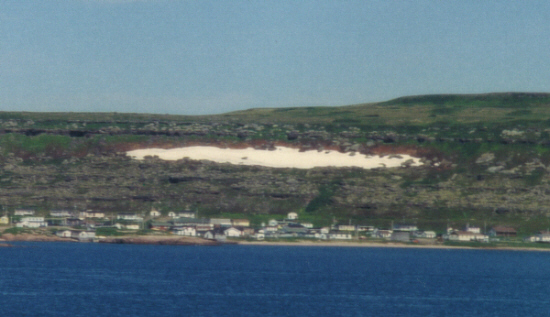For the last two million years or so, large parts of the northern hemisphere, all of Antarctica and many mountain chains on other continents have been covered and recovered by ice sheets. The surface of most of Canada has been shaped by the advancing and retreating of these glaciers.
Many causes have been suggested for the Pleistocene Glaciation and others earlier in our planet’s history including: changes in solar flux; changes in the shape of Earth’s orbit & the tilt its axis; the massing of the continents and deep oceanic currents. Probably it was a combination of several such influences.
North America’s continental ice sheet apparently started in Labrador or Ungava then spread south in the east and west in the north. Other ice sheets grew from the coalescing of mountain glaciers in the west and in the Arctic. We may be closer to new continental ice sheets than we think. The picture below was taken in July 1995 along the south coast of Labrador. There are many such ice fields in that area. What would it take for these small ice fields to join and grow into a glacier covering Labrador and Quebec? Whenever a combination of cold climate and sufficient precipitation in the form of snow occurs, as it has several times in the past few million years and in the more distant past, continental glaciers form and grow.

Ice field on the south coast of Labrador, July 1995
Other Pages in this Series
- Don Valley Brick Works Quarry - North Wall
- Before the Ice Age
- How The Glaciers Started
- The Great Delta
- Maximum Extent of the Ice Sheets
- The Story From The Lakes
- The Story of the Trees
- Early Stages of the Retreat of the Ice Front
- Drumlins and Flutings
- Lake Iroquois & its shore cliff
- The Wide Valley of the Lower Don
- Geology References
